The Spitfire went to multi blade and contra props because they couldn't go any bigger on diameter.Regarding post 42, how does propeller diameter limit a Spitfire?
The Reno racers are all running propeller smaller than stock because they don't want the prop tip to exceed something near Mach 0.85 (actual number a team secret). And the two or three fastest ones are all over 530 mph top speed at 5,000 feet. All you have to do is move to coarse pitch and you go faster, assuming you have the power to keep spinning the prop at whatever rpm you are turning.
It isn't quite that simple, but the speed record planes of today all use smaller props than wartime stock.
Navigation
Install the app
How to install the app on iOS
Follow along with the video below to see how to install our site as a web app on your home screen.
Note: This feature may not be available in some browsers.
More options
You are using an out of date browser. It may not display this or other websites correctly.
You should upgrade or use an alternative browser.
You should upgrade or use an alternative browser.
Ending the Argument
- Thread starter DogMD11
- Start date
Ad: This forum contains affiliate links to products on Amazon and eBay. More information in Terms and rules
More options
Who Replied?YF12A
Airman
Nothing is Over until I SAY it's Over! Oops, belongs on IMDB.
My bad, I couldn't help myself.
My bad, I couldn't help myself.
Well I think we have made a good start resolving the difficult issues, now we are on the fine detail.This is such a well named thread! Or not...
Cheers,
Biff

GregP
Major
They didn't HAVE to go to more blades.
They could have increased blade chord, like the Germans did, quite successfully. I don't think anyone would call the Fw 190 or Ta 152 slow, and they had a wide-chord, 3-blade prop because the Germans preferred fuselage-mounted weapons and needed the rate of fire. The Me 209 set a world record that stood for decades with a 3-blade prop of no surprising diameter.
They could have increased blade chord, like the Germans did, quite successfully. I don't think anyone would call the Fw 190 or Ta 152 slow, and they had a wide-chord, 3-blade prop because the Germans preferred fuselage-mounted weapons and needed the rate of fire. The Me 209 set a world record that stood for decades with a 3-blade prop of no surprising diameter.
But Greg you answer your own post. The Germans chose a broad chord 3 blade prop because of the aircrafts armament. I have flown on many turboprop planes, none had three broad blade prop. It is not my field of expertise but I suspect a short but broad blade is much more likely to run in a stalled condition. The Griffon Spitfires had an 11ft diameter prop while the P47 was introduced with a 12ft diameter later replaced with the 13ft paddle blade props. The F4U Corsair had a three blade 13ft 4 in prop from the start.They didn't HAVE to go to more blades.
They could have increased blade chord, like the Germans did, quite successfully. I don't think anyone would call the Fw 190 or Ta 152 slow, and they had a wide-chord, 3-blade prop because the Germans preferred fuselage-mounted weapons and needed the rate of fire. The Me 209 set a world record that stood for decades with a 3-blade prop of no surprising diameter.
wuzak
Captain
The Griffon Spitfires had an 11ft diameter prop while the P47 was introduced with a 12ft diameter later replaced with the 13ft paddle blade props. The F4U Corsair had a three blade 13ft 4 in prop from the start.
The Spitfire XIV had a prop diameter of less than 10'6".
I believe the standard prop for a Spitfire IX was 10'9" in diameter.
The difference being that the Griffon was angled down to give better pilot view.
Here are the Pilot's Notes for the Spitfire IX (1946), Spitfire VII/VIII (Merlin 63 or 64, 1943) and Spitfire XIV/XIX:might depend on the cruise settings?
again the supercharger power required is somewhat proportional to the sq of the speed of the impeller (or it's tips).
Griffon 61 used 13.4 and 11.3 in impellers and 5,84 and 7.58 gears.
Merlin V-1650-3 used 12 and 10.1in impellers and 6.39 and 8.095 gears.
Using 2000rpm cruise for the Merlin the impeller tips are moving at 847fps on the big impeller in high gear and using 1800rpm for the Griffon the the tips are moving 797fps on the big impeller in high gear if I have done the math right. The Griffon will be moving more air per revolution of the impeller so it isn't tip speed alone but at cruising speeds the supercharger isn't sucking up anywhere near the power they do at full speed. For example the supercharger will use 2.25 times the power at 2700 engine rpm as it does at 1800 engine rpm.
If the Griffon is making 25-33% more power at a given rpm (using the same manifold pressure) then it doesn't need to turn as many rpm to make "cruising power" in a low drag airframe.
I am not saying the Griffon is better than the Merlin in fuel consumption but the automatic assumption that it is a fuel hog when cruising may need a lot closer look.
Obviously once you go to power settings over 2400rpm and 7lbs boost (max lean) fuel consumption can skyrocket
Attachments
-
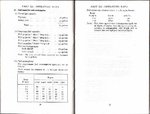 Supermarine Spitfire IX, XI, XVI Pilot's Notes 194621.jpg29.5 KB · Views: 95
Supermarine Spitfire IX, XI, XVI Pilot's Notes 194621.jpg29.5 KB · Views: 95 -
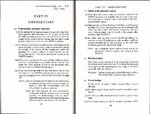 Supermarine Spitfire IX, XI, XVI Pilot's Notes 194622.jpg47.6 KB · Views: 94
Supermarine Spitfire IX, XI, XVI Pilot's Notes 194622.jpg47.6 KB · Views: 94 -
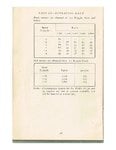 Supermarine Spitfire VII and VIII Pilot's Notes30.jpg159.9 KB · Views: 123
Supermarine Spitfire VII and VIII Pilot's Notes30.jpg159.9 KB · Views: 123 -
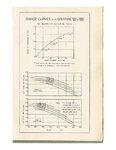 Supermarine Spitfire VII and VIII Pilot's Notes31.jpg195.2 KB · Views: 106
Supermarine Spitfire VII and VIII Pilot's Notes31.jpg195.2 KB · Views: 106 -
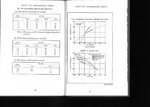 Supermarine Spitfire XIV and XIX Pilot's Notes22.jpg177.9 KB · Views: 102
Supermarine Spitfire XIV and XIX Pilot's Notes22.jpg177.9 KB · Views: 102
Wuzak, I did a search on griffon engine Spitfires and got this from wikiThe Spitfire XIV had a prop diameter of less than 10'6".
I believe the standard prop for a Spitfire IX was 10'9" in diameter.
The difference being that the Griffon was angled down to give better pilot view.
"The Rolls-Royce Griffon engine was designed in answer to Royal Naval specifications for an ..... The Griffon engine drove an 11 ft (3.35 m) diameter five-bladed propeller, some 7 inches (17.8 cm) larger than that fitted to the Mk XIV."
But when I read the article it states what you say 10ft 5in 5 blade Rotol.
Supermarine Spitfire (Griffon-powered variants) - Wikipedia
wuzak
Captain
Wuzak, I did a search on griffon engine Spitfires and got this from wiki
"The Rolls-Royce Griffon engine was designed in answer to Royal Naval specifications for an ..... The Griffon engine drove an 11 ft (3.35 m) diameter five-bladed propeller, some 7 inches (17.8 cm) larger than that fitted to the Mk XIV."
But when I read the article it states what you say 10ft 5in 5 blade Rotol.
Supermarine Spitfire (Griffon-powered variants) - Wikipedia
That was for the 20-series Spitfires, which had a new wing and extended undercarriage legs.
For interest, attached is a Flight magazine article on Fuel Development from June 1945: of note is the comment that
"The Air Ministry had the foresight to realise the critical importance of high-duty fuels, and had issued a specification for 100 octane in March 1937 - sufficiently before the war to enable our fighters to use it from the very start, although it did not come into general use throughout the whole of the RAF until August 1940." (bottom of page 612 to 613)
Also attached are pages from the official Weekly Oil Position Reports (WOPRs): these were cabinet papers, issued to Britain's War Cabinet, outlining details of the quantities of oil and petroleum products that were being shipped to Britain, and the stockpiles of the same. Note that as of 31 August 1939, there was already 153,000 imperial tons of 100 octane aviation spirit available.


"The Air Ministry had the foresight to realise the critical importance of high-duty fuels, and had issued a specification for 100 octane in March 1937 - sufficiently before the war to enable our fighters to use it from the very start, although it did not come into general use throughout the whole of the RAF until August 1940." (bottom of page 612 to 613)
Also attached are pages from the official Weekly Oil Position Reports (WOPRs): these were cabinet papers, issued to Britain's War Cabinet, outlining details of the quantities of oil and petroleum products that were being shipped to Britain, and the stockpiles of the same. Note that as of 31 August 1939, there was already 153,000 imperial tons of 100 octane aviation spirit available.
Attachments
GregP
Major
I do not believe the Spitfire was limited by the prop at all. They chose what they chose, for reasons they believed were important, and I have no access to those limitations. ALl I can say is the two fastest piston driven planes related to WWII fighters have props that are smaller, but not substantially so, than stock.
The world's fastest propeller-driven aircraft to date, the Tu-95, has 18-foot diameter props that have the tips moving at supersonic speeds. As far as I know, it is the only such aircraft regularly flying anywhere in the world. We had some supersonic prop research planes, but they didn't seem practical to us.
The world's fastest propeller-driven aircraft to date, the Tu-95, has 18-foot diameter props that have the tips moving at supersonic speeds. As far as I know, it is the only such aircraft regularly flying anywhere in the world. We had some supersonic prop research planes, but they didn't seem practical to us.
wuzak
Captain
The fact that the 20-series Spitfires with the new wings and extended landing gear got props which were 7in larger in diameter would suggest that there was a deficiency in the prop for the XIV/XVIII.
GregP
Major
If you say so, Wayne. I've done a LOT of prop experiments on RC planes and I can get equivalent performance with at least 4 - 6 different props, sometimes oif wildly different diameters.
GregP
Major
I'd think the "different" prop on a Spitfire would be a shorter one ... to avoid said groundstrike.
All my fast RC racing was with props 20% shorter than when sport flying, with considerably more pitch. You go up in pitch until you don't have the power to spin it fast enough, and back off slightly --> fast.
All my fast RC racing was with props 20% shorter than when sport flying, with considerably more pitch. You go up in pitch until you don't have the power to spin it fast enough, and back off slightly --> fast.
It suggests to me that Supermarine wanted a bigger prop all along but were restricted by the undercarriage geometry. When the undercarriage was lengthened a bigger prop was fitted.The fact that the 20-series Spitfires with the new wings and extended landing gear got props which were 7in larger in diameter would suggest that there was a deficiency in the prop for the XIV/XVIII.
Shortround6
Lieutenant General
I'd think the "different" prop on a Spitfire would be a shorter one ... to avoid said groundstrike.
All my fast RC racing was with props 20% shorter than when sport flying, with considerably more pitch. You go up in pitch until you don't have the power to spin it fast enough, and back off slightly --> fast.
With all due respect, the RC planes were operating pretty much with one air density, with changes in temperature at your flying field/s.
Trying to fly at the top of Pike's Peak with same prop you used at sea level might have somewhat different results?
GregP
Major
You try to optimize for conditions always. But optimizing a real prop (fixed pitch) is not about atmospheric conditions at all. You optimize for the situation (cruise, climb, top speed) you want most at standard conditions. If you have a constant-speed. you optimize for expected low and high speed (and maybe for rough fields) under standard conditions.
Then you go fly in the real air, and adjust as required.
I might fit a different prop if I were based in SIberia all the time. But if I had a number of airplanes moving around the world, I'd optimize for standard conditions and fly them.
Then you go fly in the real air, and adjust as required.
I might fit a different prop if I were based in SIberia all the time. But if I had a number of airplanes moving around the world, I'd optimize for standard conditions and fly them.
That's more than likely: according to Morgan & Shacklady, the new "...oleos were lengthened and strengthened to cope with the large diameter propellers...". The F. Mk XIV & XVIIIs used a 10ft 5in diameter Rotol R19/5F5/1, whereas on the F. Mk 21/22/24s, the propeller was a Rotol R14/5F5/2 of 11ft 10in diameter. The maximum speeds of the 20 series Spitfires increased by about 10-15 mph over the XIV/XVIII using the same Griffon 61/65s.It suggests to me that Supermarine wanted a bigger prop all along but were restricted by the undercarriage geometry. When the undercarriage was lengthened a bigger prop was fitted.
Users who are viewing this thread
Total: 1 (members: 0, guests: 1)


